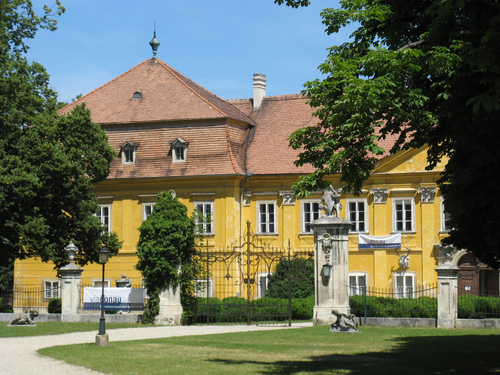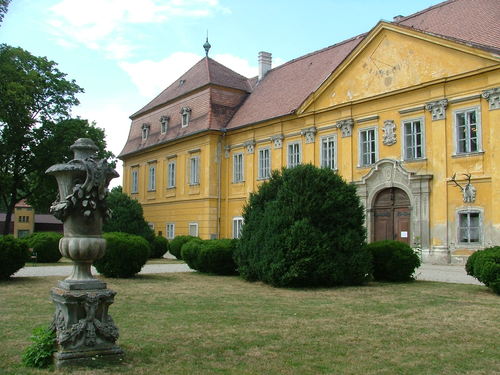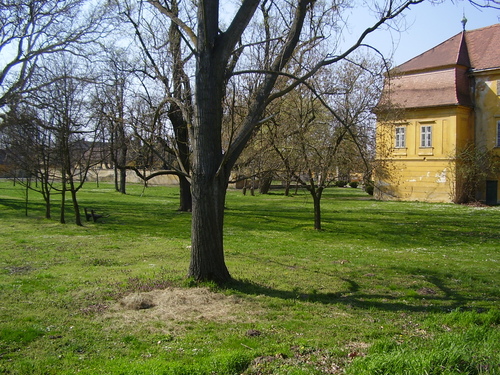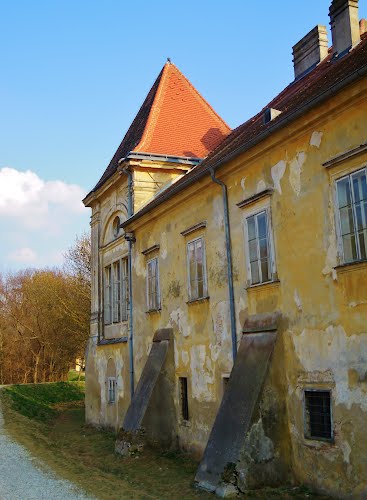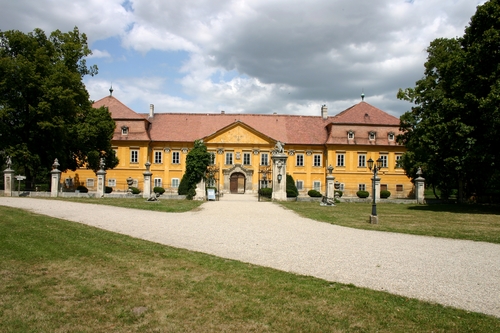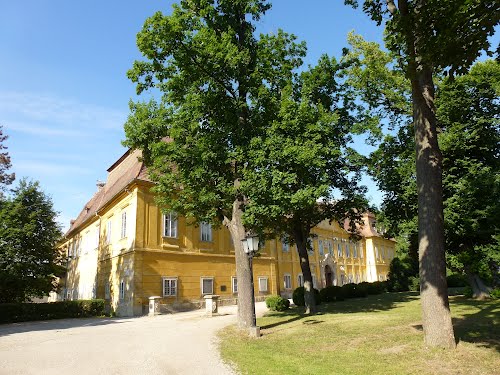Ottokar II of Bohemia founded the city of Marchegg following his victory against Bela IV of Hungary at the battle of Groissenbrunn. The castle was originally built as a city fortress on the northwest corner of the city wall. Boasting nearly 60 hectares area, it was the largest fortified building complex of the day. With three city gates, the fortified castle and a huge main square, Marchegg was designed to be an important gathering spot for military troops in campaigns attacking the East. Marchegg was first mentioned in a document in 1268, in a certificate of royal patronage.
In 1426 the city was destroyed by Hussites, yet the castle withstood the attacks. In 1502, Nicholas, Count of Salm came into possession of the Marchegg dominion as pledge. During the Siege of Vienna in 1529 Marchegg was burned to the ground, and while the castle was severely damaged, it was not conquered. As a gesture of thanks for his heroism in the defence of Vienna, Count Salm and his heirs were awarded inheritable dominion of Marchegg. Nicholas, Count of Salm died in 1530 in nearby Salmhof because the castle had been uninhabitable at the time. In 1621, Paul Palffy ab Erdöd came into possession of the estate and the castle. The Palffys were able to acquire extensive properties in neighbouring Malacky (Slovakia) as well, and held sway over Marchegg up until World War II.
Rebuilding & Renewal
Around 1640, Paul Palffy ab Erdöd commissioned the demolition of many parts of the fortification and rebuilt the complex as a moated castle. From 1720 to 1733, Christian A. Oedtl converted the castle to the baroque style and added another west wing under the aegis of Nicholas VIII Count Palffy ab Erdod. The moats were filled up with earth and the corner bastions removed, thus lending the southern facade the appearance it still has today. In later times Schloss Marchegg served as royal seat, but more often as hunting lodge and summer residence. Popular guests included Emperor Joseph II, Maria Theresa, and Franz Stephan von Lothringen. Karl Count Palffy was elevated to the rank of Imperial Prince in 1807.
Prince Nicholas Palffy ab Erdod transferred his principle residence to Marchegg at the end of World War I after being forced to leave Malacky. The death of Prince Ladislaus Palffy ab Erdod in 1947 marked the end of the entire Palffy family line in Marchegg. Destruction and looting in the post-war era pushed the castle to a state of near ruin, and it was scheduled to be razed at the behest of the heirs. Only through the joint efforts of the local Marchegg population and well-known historians could it be saved for posterity. In 1957, the city of Marchegg acquired the castle and received substantial assistance through the establishment of the provincial hunting museum, which however has since been closed, in 2000. In 2010, municipal authorities organised the exhibit “Es ist ein gutes Land” – roughly translated as “This is (a) good country” in order to depict the historic development of the city, from King Ottokar II to the final prince in the Palffy ab Erdod dynasty. The exhibition was extended through to 2012-2013 and was augmented by the special exhibit “Erlebnis Auwald”, or “Experiencing the Wetlands”.

